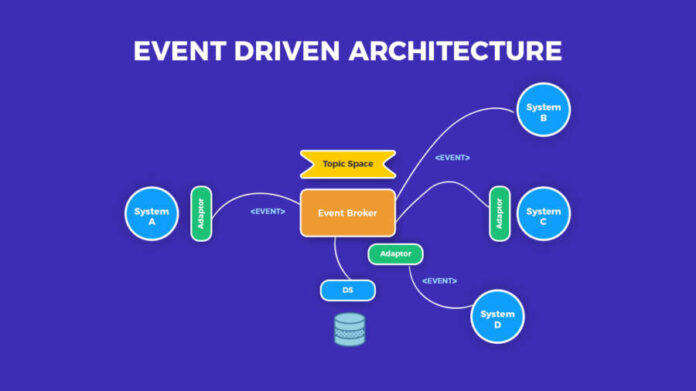In today’s world, commerce is becoming increasingly shaped by technological advances. When it comes to e-commerce, improvements are being made every day. To start, let’s take a closer look at one of these major improvements: event-driven architecture.
What is event-driven architecture?
Event-driven architecture (EDA) is an architectural style that helps developers build software systems that are more responsive to changes in the business environment. An EDA system is composed of multiple loosely-coupled components, each of which reacts to a specific event. This enables the system to be more agile and to better adapt to changes in the business environment.
An event-driven component is a component that waits for an event to happen and then takes some action in response to that event. When an event happens, the component publishes an event. Other components that are interested in the event subscribe to the event. When the event-driven component receives an event, it broadcasts the event to all of the subscribers. This pattern allows components to communicate with each other without needing to know anything about the other components. This pattern also promotes the development of systems that are responsive to changes in the environment because it allows components to be added or removed from the system without affecting the rest of the system. EDA is often used in conjunction with the microservices architectural style.
What is e-commerce?
E-commerce, or electronic commerce, is a broad term that can refer to a variety of activities, from online retail to business-to-business transactions. However, the fundamental principle behind all e-commerce activities is the same: the exchange of goods or services over the internet. E-commerce is constantly evolving and growing. It allows businesses to reach a larger audience than they would through traditional retail channels. E-commerce can take many forms, including business-to-business (B2B), business-to-consumer (B2C), and consumer-to-consumer (C2C) transactions. E-commerce allows businesses to reduce costs by eliminating the need for a physical storefront, to sell products and services to consumers all over the world, and to sell products and services to other businesses. There are a number of different e-commerce platforms and tools available, each with its own advantages and disadvantages. Some of the more popular e-commerce platforms include Shopify, Magento, and WooCommerce.
What are the benefits of using event-driven architecture for e-commerce?
Event-driven architecture has revolutionized the way e-commerce is conducted by enabling businesses to react in near-real time to customer interactions, which leads to increased customer satisfaction. By using event-driven architecture, businesses can provide a more responsive customer experience, process orders more efficiently, and increase profits.
Prior to the advent of event-driven architecture, e-commerce was conducted in a batch processing model, where orders were processed in large batches at specific times during the day. This model was not responsive to customer interactions, which often resulted in customers being forced to wait long periods of time for their orders to be processed.
By reacting quickly to customer events (such as adding a product to their shopping cart or initiating a purchase), an EDA system can provide a more responsive and interactive customer experience. This can help businesses retain customers and increase their loyalty to the e-commerce site.
In an e-commerce setting, EDA can offer several benefits, including:
Scalability: E-commerce systems are often required to handle large volumes of traffic. EDA can help to ensure that the system can handle the load without becoming overwhelmed.
Reliability: EDA can help to ensure that the system remains reliable under high load and stress conditions.
Flexibility: E-commerce systems are often required to rapidly respond to changes in demand. EDA can help to ensure that the system can adapt quickly to changing conditions.
Efficiency: EDA can help to ensure that the system is as efficient as possible in its use of resources.
Overall, event-driven architecture is well-suited for e-commerce applications. It can help businesses quickly adapt to changes in the business environment, while still providing a stable and reliable platform for conducting e-commerce transactions. In addition, EDA can help businesses improve their customer experience, which can help them retain customers and increase their loyalty to the e-commerce site.






























































